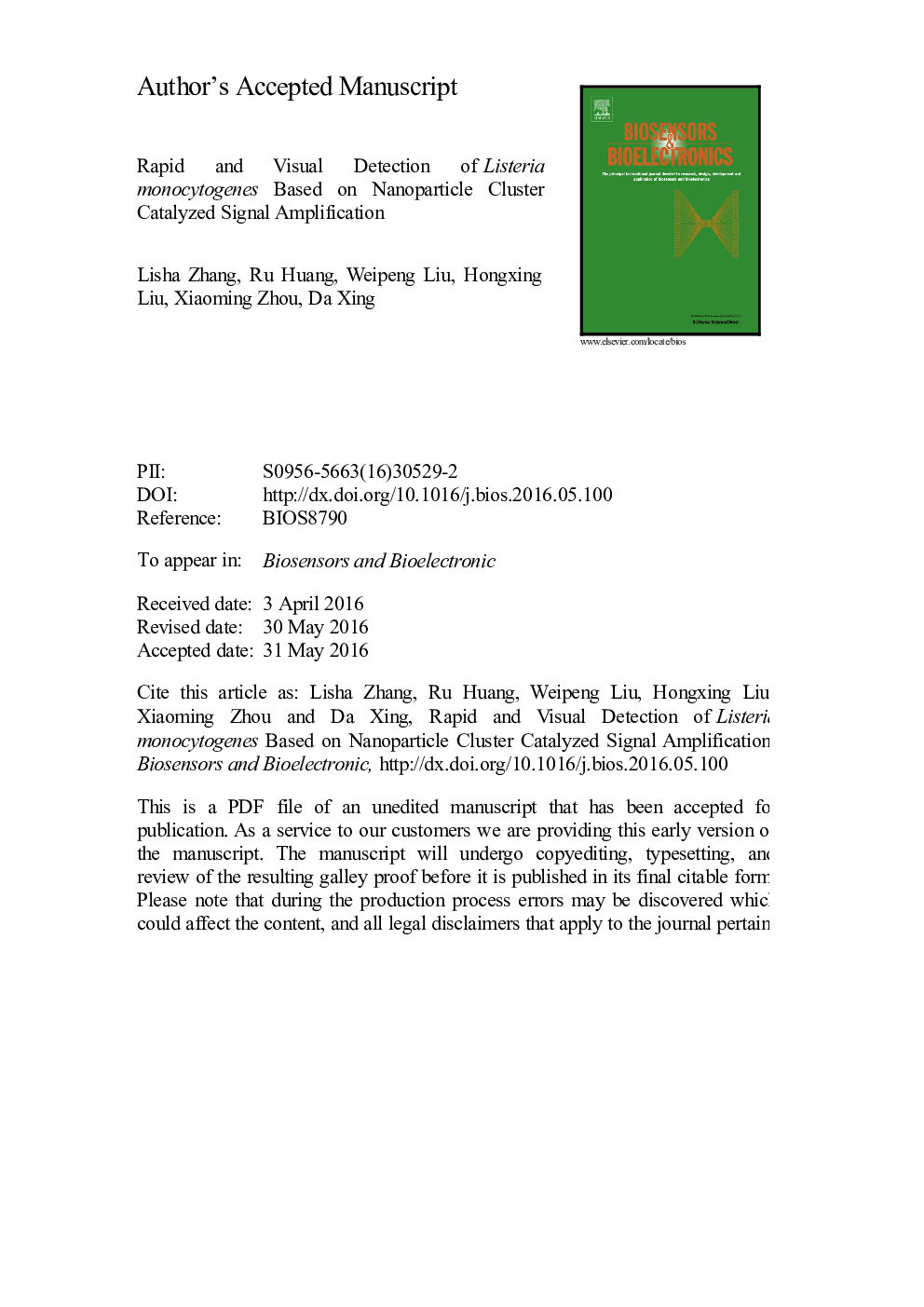| Article ID | Journal | Published Year | Pages | File Type |
|---|---|---|---|---|
| 7230029 | Biosensors and Bioelectronics | 2016 | 20 Pages |
Abstract
Foodborne pathogens pose a significant threat to human health worldwide. The identification of foodborne pathogens needs to be rapid, accurate and convenient. Here, we constructed a nanoparticle cluster (NPC) catalyzed signal amplification biosensor for foodborne pathogens visual detection. In this work, vancomycin (Van), a glycopeptide antibiotic for Gram-positive bacteria, was used as the first molecular recognition agent to capture Listeria monocytogenes (L. monocytogenes). Fe3O4 NPC modified aptamer, was used as the signal amplification nanoprobe, specifically recognize to the cell wall of L. monocytogenes. As vancomycin and aptamer recognize L. monocytogenes at different sites, the sandwich recognition showed satisfied specificity. Compared to individual Fe3O4 nanoparticle (NP), NPC exhibit collective effect-enhanced catalytic activity for the color reaction of chromogenic substrate. The change in absorbance or color could represent the concentration of target. Using the Fe3O4 NPC-based signal amplification method, L. monocytogenes whole cells could be directly assayed within a linear range of 5.4Ã103-108 cfu/mL and a visual limit of detection of 5.4Ã103 cfu/mL. Fe3O4 NPC-based method was more sensitive than the Fe3O4 NP-based method. All these attractive characteristics of highly sensitivity, visual and labor-saving, make the biosensor possess a potential application for foodborne pathogenic bacteria detection.
Related Topics
Physical Sciences and Engineering
Chemistry
Analytical Chemistry
Authors
Lisha Zhang, Ru Huang, Weipeng Liu, Hongxing Liu, Xiaoming Zhou, Da Xing,
